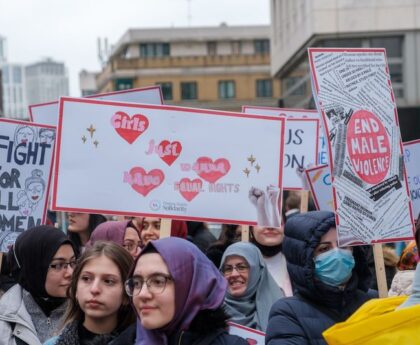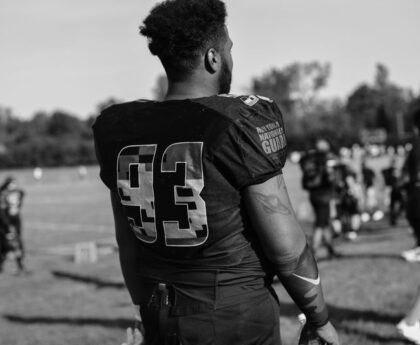A Jury Rules in Favor of Former Starbucks Employee in Wrongful Termination Lawsuit
The Case and Verdict
A New Jersey jury has unanimously ruled in favor of Shannon Phillips, a former regional director for Starbucks, in her wrongful termination lawsuit against the company. Phillips, who is white, claimed that her firing was a result of her race. The lawsuit, which was first filed in 2019, alleged that Starbucks made Phillips a scapegoat in the wake of a racial controversy that occurred at one of its stores in 2018.
The controversy unfolded when two black men, Donte Robinson and Rashon Nelson, were arrested at a Starbucks in Philadelphia while waiting for a business meeting. The incident sparked nationwide protests and prompted Starbucks to close some of its stores for a day for racial bias training. Robinson and Nelson reached a private settlement with Starbucks and the city of Philadelphia.
After a six-day trial, the jury returned a verdict, ordering Starbucks to pay $25.6 million in settlement money, including punitive and compensatory damages, to Phillips. Her attorneys argued that her termination was unjust and that her race played a determinative factor in the company’s decision.
The Allegations and Starbucks‘ Defense
Phillips, who had been employed by Starbucks for nearly 13 years at the time of her termination, claimed that she had no involvement in the arrests and was not even present at the store on that day. She asserted that she actively worked on crisis management efforts and took steps to ensure a safe and welcoming environment for all customers, regardless of race.
Starbucks, on the other hand, argued that Phillips lacked awareness of the seriousness of the situation and appeared overwhelmed and frozen during the crisis. The company maintained that her termination was justified and based on legitimate, non-discriminatory reasons.
During the trial, a key testimony came from a black district manager at Starbucks, who stated that he believed Phillips’ race played a role in her firing. This manager also claimed that his own race protected him from termination. This testimony bolstered Phillips’ case, providing evidence of potential racial bias within the company.
The Impact and Implications
This ruling has raised questions about Starbucks‘ handling of the racial controversy and its subsequent actions. The decision by the jury highlights the need for companies to be more thoughtful and transparent in their termination decisions, especially when faced with racially charged situations.
The substantial payout awarded to Phillips sends a clear message that workplace discrimination, even when it involves white employees, will not be tolerated. It emphasizes the importance of fair and equal treatment and serves as a reminder that companies must be held accountable for their actions when it comes to diversity and inclusivity.
This case also sheds light on the broader issue of racial inequality in the workplace. While the attention is often focused on discrimination against people of color, this lawsuit brings to the forefront the reality that white employees can also face discrimination based on their race. It is a reminder that racial bias can affect individuals from all backgrounds and that solidarity in the fight against discrimination is crucial.
Editorial: Striving for Equality and Accountability
The outcome of this lawsuit serves as a catalyst for reflection and introspection within Starbucks and other companies alike. It is an opportunity for organizations to reevaluate their diversity and inclusion practices, ensuring that every employee is treated fairly and respectfully, regardless of their race.
Companies must understand that promoting equality and addressing racial bias is not just a public relations exercise. It requires genuine commitment, ongoing training, and a willingness to hold individuals and systems accountable for discriminatory behavior.
Advice for Companies
In light of this verdict, it is imperative for companies to take proactive steps in creating environments that foster inclusivity and equality. Here are a few key actions to consider:
1. Implement comprehensive diversity and inclusion training programs that address unconscious bias and promote understanding across all levels of the organization.
2. Establish clear policies and procedures for addressing allegations of discrimination or bias, ensuring that investigations are thorough and impartial.
3. Encourage open dialogue and provide a safe platform for employees to voice their concerns and experiences related to discrimination.
4. Hold leaders accountable for fostering an inclusive culture and address any bias or discriminatory behavior promptly and appropriately.
5. Regularly evaluate and assess diversity and inclusion initiatives to measure their effectiveness and make necessary adjustments.
By implementing these measures and actively working to combat discrimination, companies can create workplaces that celebrate diversity and ensure equal opportunities for all employees. This not only benefits the employees but also contributes to a more inclusive and just society as a whole.

<< photo by Katterinaaa >>
The image is for illustrative purposes only and does not depict the actual situation.
You might want to read !
- Canadian Courts Rule in Favor of Starbucks Manager, Award $25.6 Million in Wrongful Termination Lawsuit
- Analyzing the Possibilities of Trump’s Court Appearance in Miami
- Is Indictment of Trump Over Government Secret Mishandling Imminent?
- Cornel West Criticizes RFK Jr. for Drug Addiction
- Manitoba Tragedy: Fatal Highway Collision Claims 15 Lives near Carberry
- Canada vs. Panama: A Clash for CONCACAF Supremacy in 2023




